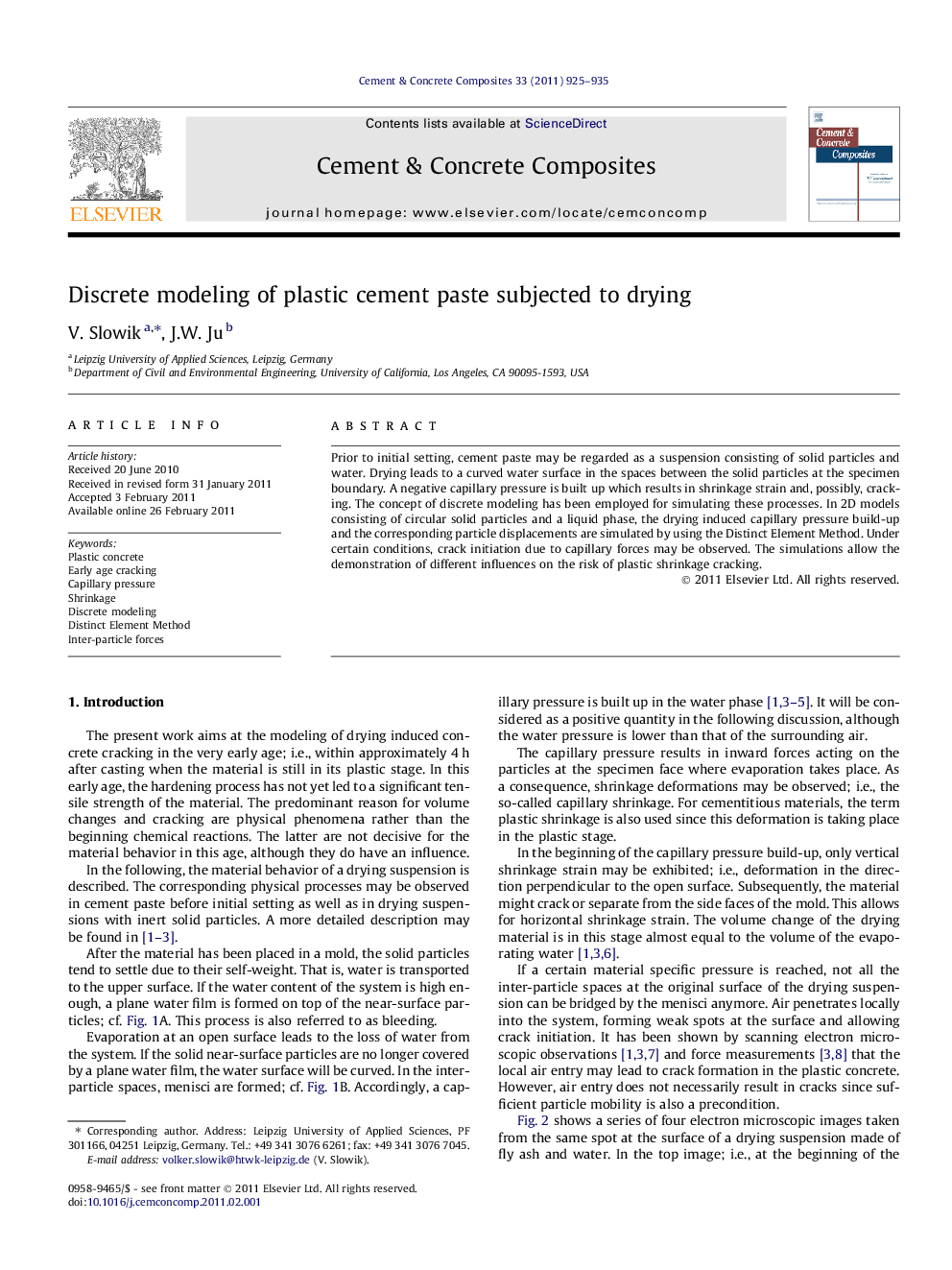| Article ID | Journal | Published Year | Pages | File Type |
|---|---|---|---|---|
| 1455159 | Cement and Concrete Composites | 2011 | 11 Pages |
Prior to initial setting, cement paste may be regarded as a suspension consisting of solid particles and water. Drying leads to a curved water surface in the spaces between the solid particles at the specimen boundary. A negative capillary pressure is built up which results in shrinkage strain and, possibly, cracking. The concept of discrete modeling has been employed for simulating these processes. In 2D models consisting of circular solid particles and a liquid phase, the drying induced capillary pressure build-up and the corresponding particle displacements are simulated by using the Distinct Element Method. Under certain conditions, crack initiation due to capillary forces may be observed. The simulations allow the demonstration of different influences on the risk of plastic shrinkage cracking.
